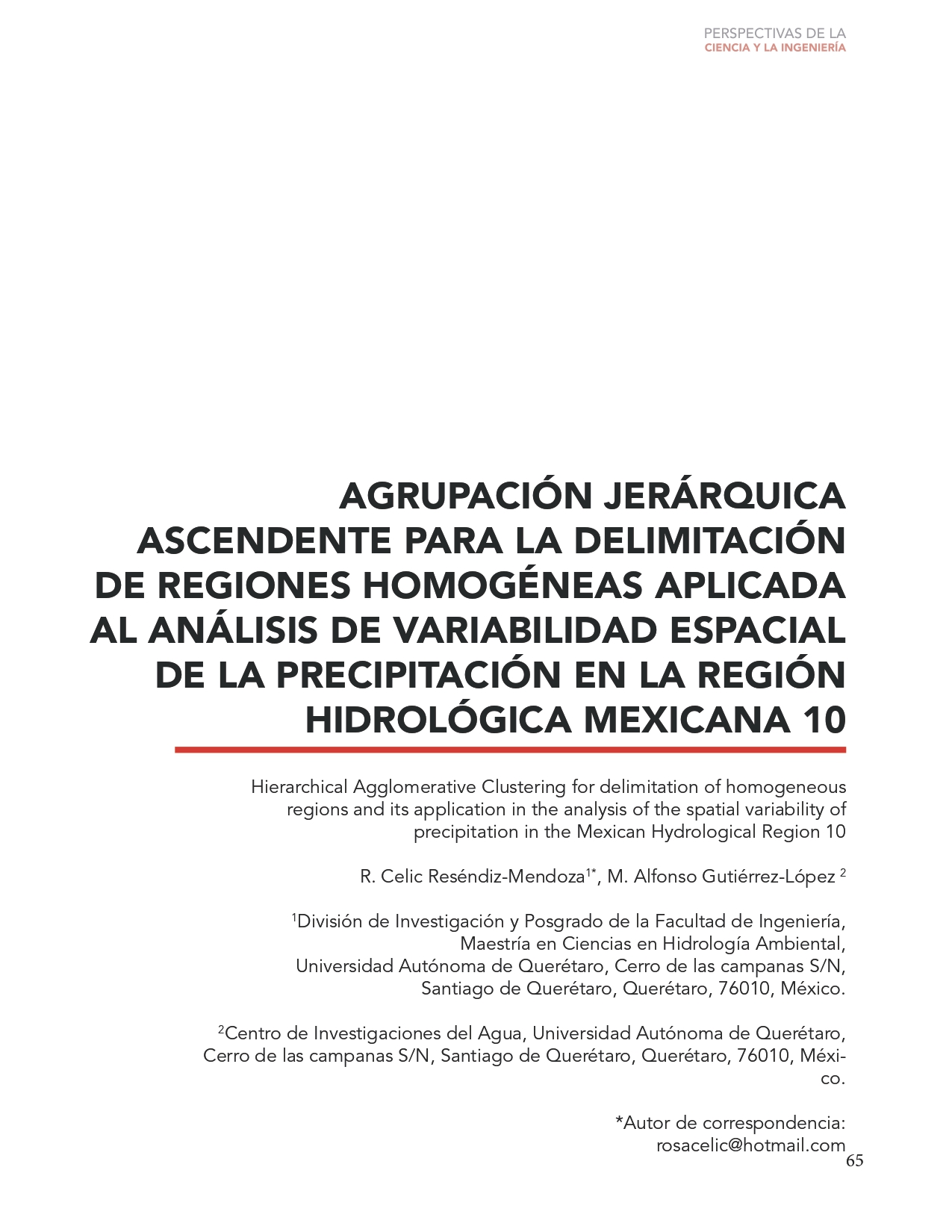Abstract
The design ofhydraulic structures requires reliable information for the researcher to accurately estimate an event design. However, a common problem in the planning and design of such hydraulic structures is the scarcity of quality and representativeness of
gauging stations. A plausible solution is the application of regional techniques consisting of three stages: The first one agglomerate objects that satisfy a degree of similarity between them, the second one includes the selection of a regional frequency distribution and the last one transfer subsequent information of the analyzed hydrological variable from the gaged site to the ungaged
site. In the present work, a regional analysis in its first stage was developed for the hydrological region 10. The analysis consisted
in the delimitation of homogeneous regions using the Agglomerative Hierarchical Technique and the Ward’s method to a set of 46
climatological stations. Three homogeneous regions with 24, 8 and 14 stations were obtained from five descriptive variables of the
zone as mean annual precipitation, longitude, latitude, gagged elevation and ocean distance. The method was validated by statistical verification techniques of regional homogeneity. The resulting values of 0.169, 0.169 y 0.220 in each region did not exceeded the limit value of 0.3 required to feasibly delimit the spatial variability of precipitation. As result, in the study of the next stage of the regional analysis the choice of an ungaged site could be in any of the three homogenous regions since the used technique is a feasible method to transfer information from gaged station to any ungaged point from scarce climatological records.

This work is licensed under a Creative Commons Attribution-NonCommercial 4.0 International License.

